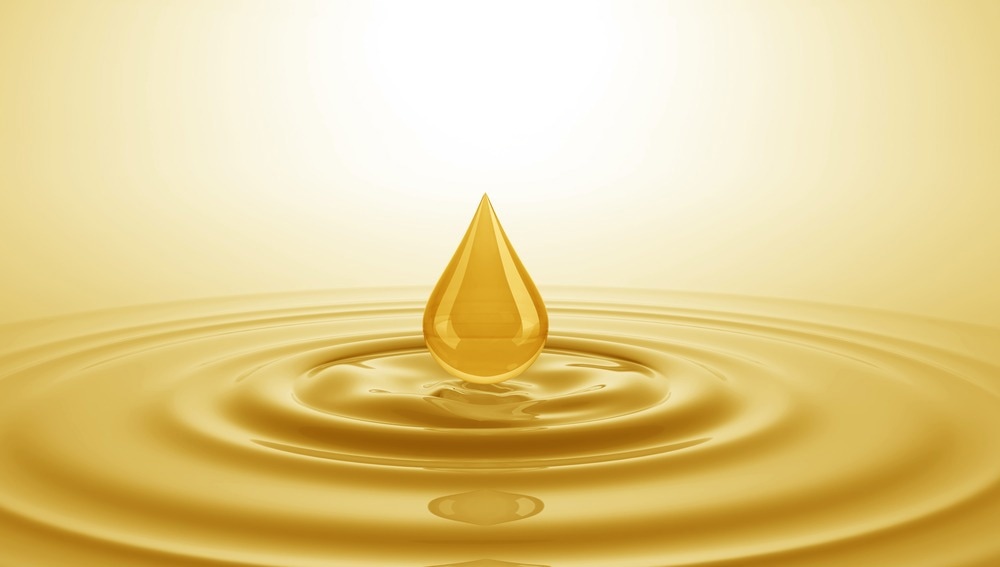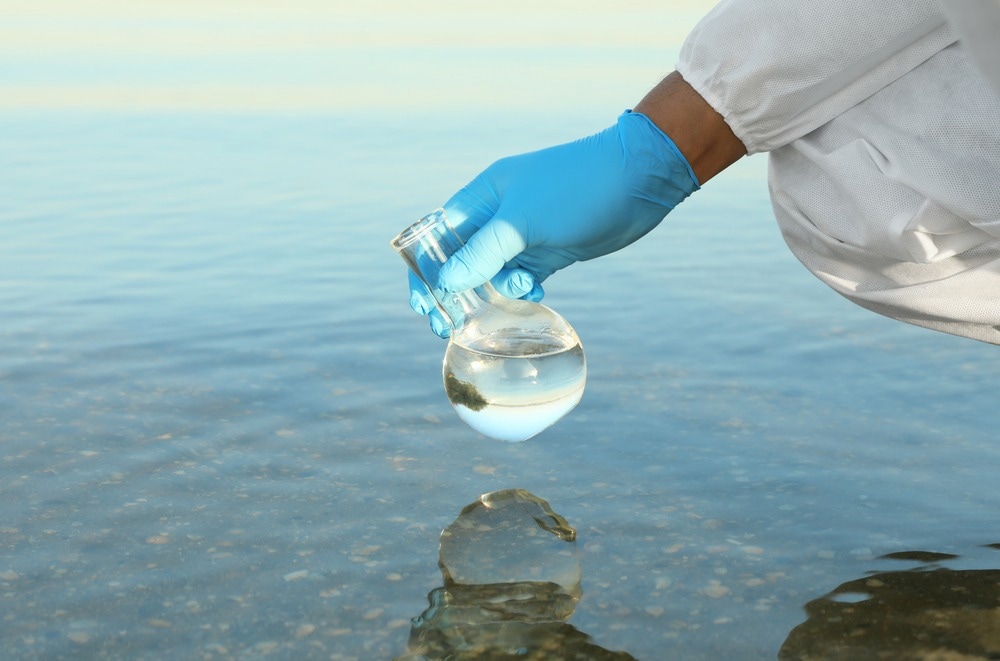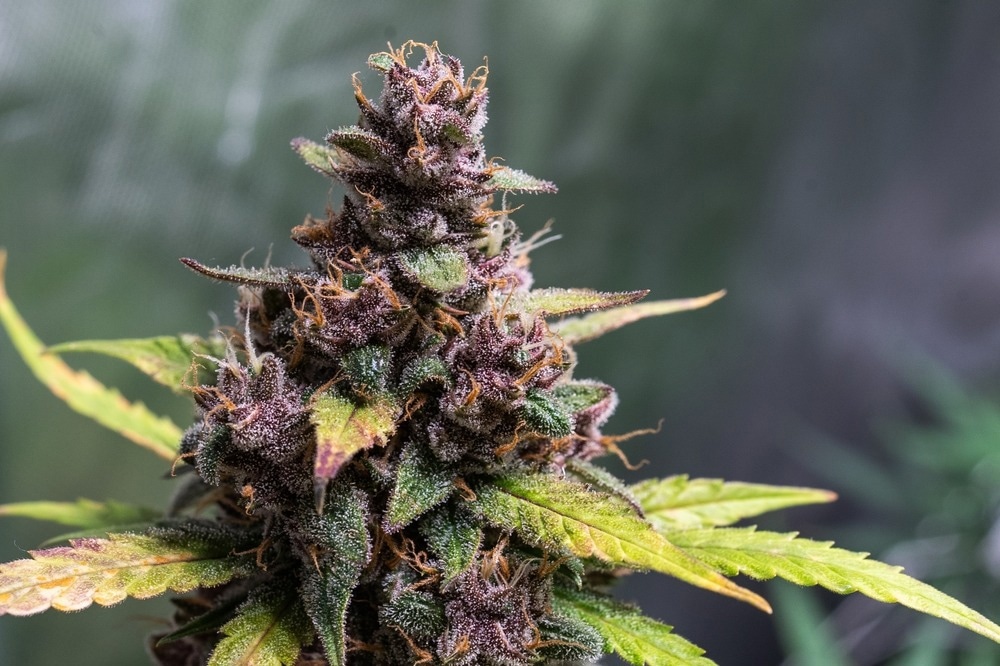Sponsored by HORIBAReviewed by Olivia FrostDec 1 2022
This article discusses how A-TEEM molecular fingerprinting can be used for pharmaceutical analysis. It will highlight exciting results in the field of wine and spirits phenolics, pharmaceutical analysis, olive oil adulteration, and water and trace PAH oil analysis using HORIBA’s A-TEEM Molecular Fingerprinting technique.

Image Credit: ShutterStock/alanto
HORIBA developed and patented application-specific instruments and software methods with a primary focus on nanotechnology and water treatment monitoring applications. The most significant developments have included simultaneous absorbance fluorescence instruments utilizing multi-channel detectors that expand abilities beyond conventional fluorescence excitation-emission matrices.
Classic Fluorescence Measurements
Classic fluorescence measurements often involve excitation and emission spectrum, traditionally made separately.
Fluorescence intensity is generally presented as a function of emission wavelength for the emission spectra, or as the excitation or absorption wavelength, or excitation spectra. This works very well for samples with one single species in the sample. However, if there are many different species, such as multicomponent mixtures and complexes, this does not work as well, as many different types of chemicals have spectral overlaps. This additional variable is associated with other relative and absolute concentrations of the components.
The conventional solution is an excitation-emission matrix (EEM), also known as 3D fluorescence or total fluorescence scanning. This separates excitation-emission matrices, which are fused into one 3D contour plot.
A conventional instrument would take an excitation scan at a given emission wavelength and provide visual qualitative information about the number of different components in a sample, primarily because every other kind of chemical in a sample has a unique absorption excitation and emission wavelength coordinate shape.
Over the past few decades, there has been a progressive increase in publications involving this EEM type of measurement.
Applications of Excitation-emission Matrix Techniques
There are many different types of EEM applications, including studies of the environment, water quality, and toxicity effects.
EEM has become a widely accepted tool in various research fields.
A problem with EEMs is a phenomenon known as Inner Filter Effects.

Image Credit: ShutterStock/New Africa
The primary inner filter effect of the excitation beam path, and the secondary absorption of the emission beam path work against fluorescence measurements with this EEM technology, which means that users have to work with very dilute solutions.
The main benefit of HORIBA’s A-TEEM technologies is the simultaneous measurement of absorption and fluorescence properties, correcting this inner filter effect. This helps build compound libraries and multivariate statistical models.
The Aqualog by HORIBA
The Aqualog was the first A-TEEM optical instrument to be released by HORIBA, and is a true hybridization of a UV-Vis absorption system.
One of the instrument's key features is its charge-coupled device (CCD) detector, which greatly increases the acquisition speed.
Previous implementations of EEM, where they had inner filter effects, required separate instruments for UV-Vis and fluorescence measurements. On top of that, there is a scanning system in the emission path, much like we have in the absorption path. The Aqualog system gives much faster scanning and true simultaneous absorption and fluorescence excitation-emission mapping.
The A-TEEM allows absorbance measurements providing information on all colored species that may not be fluorescent.
A-TEEM provides absorption information for the sample, providing data on the colors that may be weakly fluorescent or non-fluorescent.
Users can also calculate the transmittance and various color and chromaticity indices, and it is beneficial to receive the absorption information simultaneously.
Differentiating Between Different Molecules and Making Models to Quantify Different Molecules
Aqualog can measure and provide linear responses for the fluorescence information up to the Beer-Lambert linear relationship. This determines the linear relation between absorbance and concentration for any chemical and solution. This expands a linear concentration range for fluorescence, provides very high sensitivity, allows users to resolve low-concentration samples from high-concentration backgrounds, and produces effective libraries in multi-various statistical models that enable users to identify compounds over wide concentration ranges.
The Aqualog collects data much faster than trying to scan each excitation and emission wavelength in serial mode. With the HORIBA A-TEEM system, users can measure both colored and fluorescent compounds as well as scattering compounds simultaneously. They can also carry out CIE chromaticity and CIELAB measurements.
Aqualog can correct the inner filter effects as data is collected. Data can be applied and formatted to carry out the multi-block organization of absorbance and fluorescence, significantly enhancing the statistical significance of many multivariate statistical models.
HORIBA’s new FAST-01 Autosampler allows batch sampling with a fully temperature-controlled sample changer. There is an insulated sample chamber that can deal with several different types of vial and tray applications.
Water Disinfection
The Aqualog was originally developed for drinking water and disinfection. The primary goal of a drinking water treatment plant is to disinfect the water.
Microbial contamination has caused many diseases in history. Water sourced from any natural river stream or reservoir contains several naturally dissolved aromatic organic materials or natural organic matter . This ubiquitous mixture comes from compounds that leach out of the soil from the watershed into the drinking water treatment plant source.

Image Credit: ShutterStock/New Africa
Chlorine reacts with this and leads to toxic disinfection byproducts associated with various types of carcinogenic activity and various reproductive issues.
HORIBA’s autosampler allows users to sample in the drinking water treatment plant from almost any source of interest. The Aqualog is a plug-and-play flow cell operation.
More than 10 million people are subjected to health level concerns, and well over a thousand systems nationwide in the United States. With the Aqualog, users can continuously monitor dissolved organic carbon and quantify and qualify the different components of the organic matter to take care of disinfection byproduct rules.
This platform can also monitor algae and oil PAH and BTEX, which are associated with petroleum spills.
Assessing Wine Quality with the A-TEEM
This section will discuss three applications dealing with HPLC-level specificity for phenolics and anthocyanins.
Aqualog can evaluate basic chemistry, including pH, alcohol, and sulfites.
With this system, we have a one-stop shop for wine chemistry. Several of HORIBA’s wine customers also use this to evaluate whether the wine has been smoke-tainted.
In addition to identifying spoilage compounds, users can identify color additives used to make wine darker red and oak barrel-extractable compounds that deal with flavor and mouth-feel issues.
The A-TEEM is a very expansive technology, offering several synergistic interactions. With this, absorption and transmission data, color information, and hue intensity can be used for qualitative and quality-controlled designations.

Image Credit: ShutterStock/Andrey Bayda
EEM fingerprinting identifies specific components that feed into more specific information related to wine quality, such as lot-to-lot and regional varietal process and developmental characteristics.
Users can apply regression and multi-block analyses to calibrate the EEM information.
This can be used to evaluate and calibrate against reference chemistry techniques such as reverse-phase HPLC, gas and liquid chromatography, mass spectroscopy, and the ability to calibrate with pure chemical standards or mixtures as a primary method.
The primary goal is to have very specific information about these various chemical types. Many of the most effective models evaluated by combining the variables from both the absorption spectra and the fluorescence EEM spectra provide users with leverage and information from weakly fluorescent and highly fluorescent chemicals.
While every chemical has its own absorption and emission spectrum, there is a unique relationship between the absorption and emission spectrum known as the quantum yield. There is also a unique relationship between the concentration and the absorption known as the extinction coefficient.
The absorption and fluorescence data greatly increase the ability to distinguish different chemicals based on the extinction fluorescence quantum yield and spectral shapes. Therefore, the concentration, sensitivity, and selectivity can be taken advantage of and further derivations of the absorption data can be considered.
EEM technology makes molecular- and isomeric-specific designations of different compounds. Statistically, the Parallel Factor Analysis can be applied using principle components assessments that identify absorption and emission spectral shapes as loadings and concentrations as scores.
There is also an instant chromatographic integrator and report generator called the HORIBA Multi-Model Application Tool.
The A-TEEM looks at different phenolics, verifying and validating each of these particular model compounds within the framework of the multi-model application tool. Users can identify different species and varieties of grapes and how the grapes respond during the fermentation procedure.
Identifying Olive Oil
Being able to identify extra virgin olive oil is very important.

Image Credit: ShutterStock/luigi giordano
HORIBA’s platform can differentiate between different types of olive oils, including extra virgin and machine-processed, and determine extra light fractions by evaluating their chlorophyll and pheophytin content, oxidation and degradation products, compound, and component two, which is the oxidation product.
Users can identify olive oil freshness using this information. The breakdown of and the loss of magnesium and chlorophyll is a good indicator of olive oil freshness.
Differentiating Cannabinoids
A cannabis flower primarily comprises acidic or inactive carboxylated forms such as THC and CBDA.
Researchers can differentiate these different molecules primarily based on the A-TEEM data and can measure CBD to THC ratios.
HORIBA’s solution also helps determine decarboxylation and activation levels for different flowers and various purification process types associated with cannabinoids.
The Aqualog and A-TEEM is roughly a hundred-fold more sensitive in terms of the absolute plant material compared to conventional methods.

Image Credit: ShutterStock/StillOneframe
Pharmaceutical Applications
The main objective of this application is to validate that the vaccines are in the proper packaging at the final stage. This replaces a potency test that normally takes up to 30 days.
Researchers can take a simple A-TEEM spectral fingerprint by simply solubilizing the vaccine, conducting a rapid analysis, and identifying the vaccines in less than 30 minutes.
HORIBA offers completeness traceability for absorption and fluorescence, IOQ support, and a 21 CFR-compliant software module that enables FDA approval.
The platform also measures cell media, replacing the standard chromatographic or mass spectroscopic measurements that are very expensive and time-consuming.
The A-TEEM offers a rapid holistic method that can be used for early-stage identification and material quality assessment. It can distinguish between various vendors with a calibration validation set using a multi-block technique with the extreme gradient boost method at 100% accuracy.
Users can make conclusions about age- and light-dependent interactions. They can also identify different cell media recipes with the A-TEEM technology.
HORIBA’s technology and services can receive comprehensive molecular fingerprints in seconds to minutes. It is column-free and solvent-free with minimum sample preparation, while it is very easy to facilitate automated analysis and dashboards with the multi-model application tool.

This information has been sourced, reviewed and adapted from materials provided by HORIBA.
For more information on this source, please visit HORIBA.